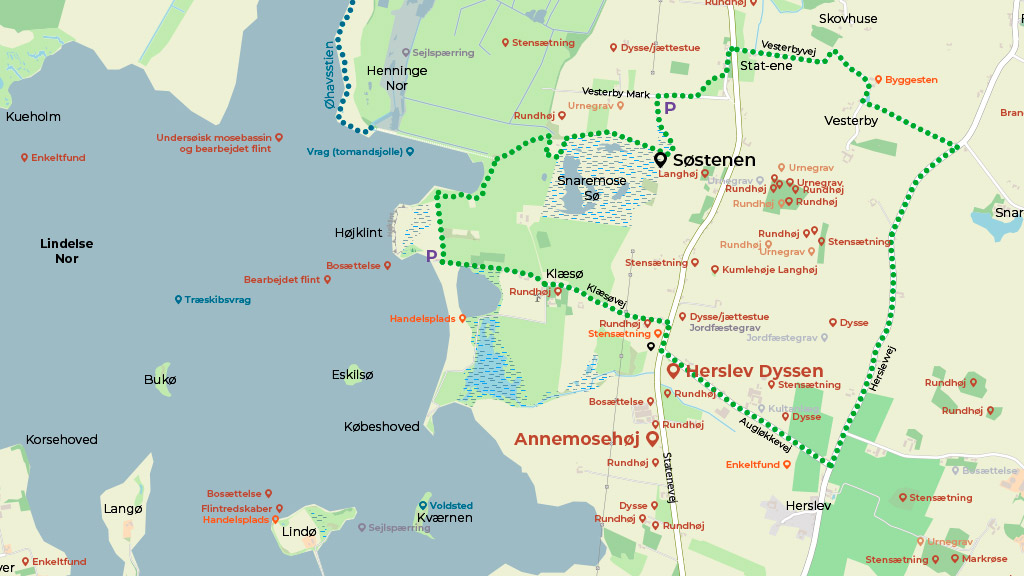
The Passage grave Annemosehøj
Freestanding passage grave chamber in heavily plowed remnants of the original mound.
Built in the middle part of the Neolithic period between 3250-3100 BC, it originally measured 3 x 14 x 11 meters. Today, there are 4 capstones on top of 13 supporting stones.
Not all tombs were burial chambers for individuals and their families. Some were used for up to 1000 years, throughout the Neolithic and parts of the Bronze Age. Beautiful, richly decorated pottery vessels were sacrificed on the kerb stones around the grave mound, and excavations show that the passage graves were a place of both physical and spiritual interaction with the dead, probably through ritual acts. Bones were rearranged and manipulated, types of bone were sorted and removed, while others were placed in neat piles.
Imagine navigating the narrow access corridor with a torch in your hand. The light, smoke and smell on the journey from the world of the living to the world of the dead.
Discover Annemosehøj and the ancient monuments of Langeland
On a stretch of just 2 kilometres north from here, in the past you would have seen at least 31 burial mounds and dolmens. This may sound like a lot, but it’s not an atypical picture, and in many parts of Denmark you can see long rows of burial mounds on hilltops in the landscape, on the border between low-lying areas such as plains and wetlands, and higher moraine soils.
Today, 2,300 dolmens have been preserved in Denmark - only a tenth of the original more than 23,000 dolmens and passage graves throughout the country. 500 metres north of Annemosehøj is the Dolmen at Augløkkevej.
The walk on the map is 8 km past Klæsø Naturhavn, Lindelse Inlet and Langeland's largest stone.
More Hidden Stories
Discover more hidden stories from Langeland at www.govisitlangeland.com/past
The project Langelands Hidden Stories is supported by the Danish Outdoor Council and developed by VisitLangeland and Langelands Museum.
